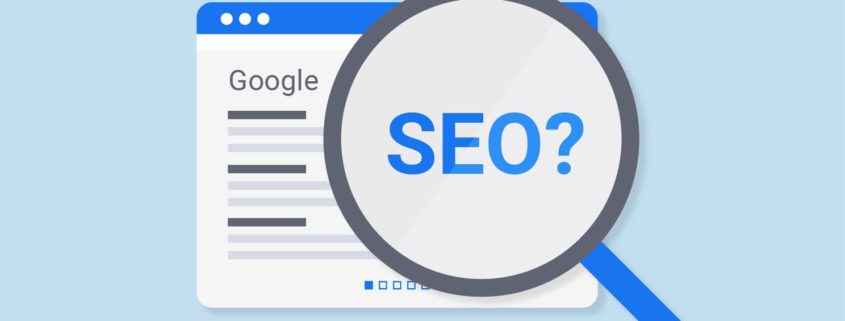6 Tips for Designing Homepage Content for SEO
It takes site visitors only 50 milliseconds to decide whether they like what they see on your website or not. Therefore, if you’re on the fence about search engine optimization, consider this the sign you’ve been waiting for and contact that SEO in Dubai for an audit and optimization of your homepage.
The following are some elements of the homepage you can optimize for SEO.
1. Title Tag
Load any web page you want, right-click anywhere on the page, and select “View page source” in the resulting options. You will find the web page title enclosed in <title></title> container tags. It is normally found high up in the page source, maybe a few lines down from the <html> opening tag.
The title tag is the clickable headline displayed in SERPs. Therefore, it is essential in enticing search engine users to click through to your website. Open a web page on your browser, and you should see its title tag displayed on the browser tab. Finally, if you save the page in your bookmarks, your browser will use the title tag as the bookmarked link’s name.
Title Tag Optimization Tip
Use a broad keyword on the homepage’s title tag. If your website sells running shoes, then make sure your title tag contains the broad keyword, “running shoes.”
You must also use your brand name. Thus, if your business name is “Road Runners,” include that name in your title tag.
Finally, keep your title tag short. A length of 50 to 55 characters is good.
The following are example title tags for the homepage of a running shoes store called Road Runners.
- <title>Running Shoes – Road Runners</title>
- <title>Road Runners – Running Shoes</title>
- <title>Road Runners Running Shoes Store</title>
2. Meta Description
The meta description is a metadata HTML element. Like the title tag, you can see a web page’s meta description in the page’s source code. It is enclosed in this empty element (i.e., it has an opening tag but no closing tag): <meta name=”description” content=” “>.
The meta description is an overview or a summary of a web page’s content. Search engines may (or may not) use it in your search snippet in relevant SERPs. Whenever it is shown, it can influence search engine users to click through to a particular website shown in the SERPs.
Meta Description Optimization Tip
Use creative and engaging copy in the meta description. Your goal is to persuade search engine users to click through to your homepage when they see it on SERPs.
You can also use keywords in your meta description. Google highlights words in search snippets that match the search term. Therefore, by including keywords for which you want your homepage found in your meta description, you can stand out more in search results.
Limit your meta description to 155 characters. Google will trim anything longer. Of course, you can use this to your advantage by creating a meta description that will play on your target audience’s curiosity and induce them to click through to your website.
Finally, include a call to action. It might just be the encouragement your target audience needs to click through to your homepage.
The following are example meta descriptions for the hypothetical running shoes store’s homepage.
- <meta name=”description” content=”We have running shoes for men and women from Adidas, Asics, Nike, Reebok, and other brands. Browse our extensive sports shoes collection now.”>
- <meta name=”description” content=”Find the running shoes, tennis shoes, trainers, basketball shoes, soccer shoes, and other sports footwear you need. Shop now.”>
- <meta name=”description” content=”Running shoes are on sale! Find affordable sports shoes for men, women, and children from the most popular brands. Buy Nike and Adidas shoes for only…”>
Note: The last example tries to pique the target audience’s curiosity. If you’re using such a strategy, however, make sure your homepage readily provides the cut-off information. Perhaps your header slider can show the active Nike and Adidas promos.
3. Branding
You must include your brand’s logo and colors on your homepage. Your homepage must represent your brand.
4. Navigation
Make sure you have easily accessible navigation on your homepage. This is to make it convenient for homepage visitors to explore your website. This can discourage bounce-outs and increase your visitors’ average time on site.
5. Copy
Your copy must say who you are, what you do, and what sets you apart from your competition.
The homepage has three essential copy elements: your headline, the intro text, and the body copy.
The headline must be straightforward but highlight your unique selling proposition. It should be wrapped in <h1></h1> tags.
The intro text is right underneath the headline. It is one or two lines long and gives the headline some context.
Break the body down into multiple sections. Each section can have a heading (wrapped in h2 tags). Moreover, include keywords in both the heading and content.
Suppose the hypothetical running shoes store used in previous examples differentiates itself by offering low-priced running shoes from popular brands. In this case, the homepage’s headline, intro text, and section headings can be something like this.
<h1>The Most Affordable Branded Running Shoes</h1>
We have the lowest-priced running shoes from Nike, Adidas, Asics, New Balance, Reebok, Brooks, Saucony, Mizuno, and more. We buy in bulk to get the lowest prices and pass on our savings to you.
<h2>Our Footwear Brands</h2>
<h2>Running Shoes for Men </h2>
<h2>Running Shoes for Women</h2>
<h2>Running Shoes for Children</h2>
<h2>Beyond Running Shoes</h2>
6. Call to Action
Make sure your homepage has a sufficient number of calls to action. Put it in the header area, under the intro text, or right beneath the headline. Also, put a CTA after every section of the homepage.
The CTA will encourage your homepage visitors to do something to benefit your business. For an e-commerce website, a CTA can lead visitors to the site’s money pages (category pages, product pages). For a company that provides a service, a CTA can direct visitors to a form they can use to request a quote, a meeting, or an inspection.
Optimizing the Homepage for SEO
Optimizing your homepage for SEO boils down to two things. First, design for usability to improve user experience so that dwell times will increase and more people will explore beyond your homepage. Second, optimize the elements that directly impact your homepage’s SERP rankings.
Of course, this is no easy fix, and there are many strategies you can implement. Thus, you should probably work with an SEO service provider to ensure you’re not missing any optimization opportunities.
















